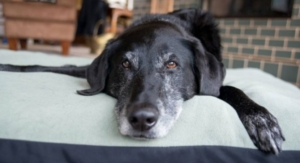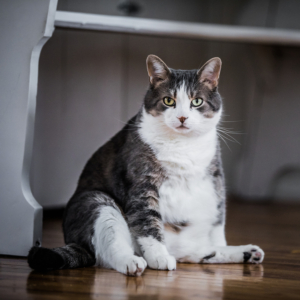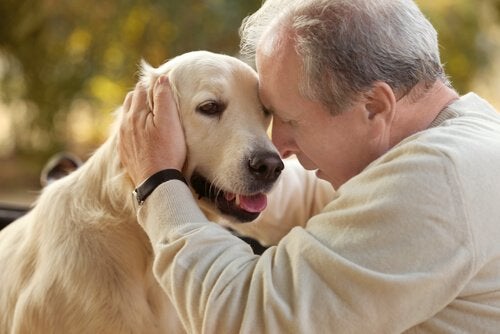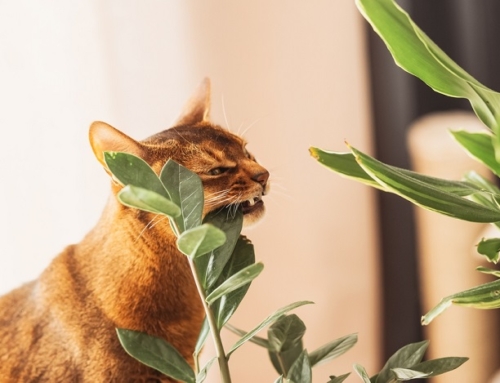As time goes on and your pet grows, you start noticing that your pet is starting to have a layer of white fur.
They start to be less active and health problems begin to appear over and over again.
You notice that your pet is no longer the happy energetic puppy or kitten that you once had but now have become a senior who is enjoying time alone and peacefulness. Noticing this sight, a dark looming question usually approaches the owner’s mind. Is it time to say goodbye?
 Saying goodbye to your pet is one of the most difficult decisions in your life. Having a pet is not just having a toy; they are your child and seeing them get old and sick makes everyone’s heart sink. No one ever wants to see this sight and have to make rational decisions in such an emotional time. But alas, every life form has an end. So when exactly is the right time to say goodbye? Sadly, there are no definitive answers. It all depends on the connection between the owner and their pet. Do they want to see their pet sick? Do they want their pet to be living a lifestyle where the pet is no longer happy? Does the pet start to neglect their own health and living style? Is the pet ignoring calls from the owner? All these are questions that go through one’s mind when a decision to say goodbye has begun and many more questions are to follow. When the connection between the owner and their pet is strong; as hard as the decision is, both parties usually know when it is time to say goodbye.
Saying goodbye to your pet is one of the most difficult decisions in your life. Having a pet is not just having a toy; they are your child and seeing them get old and sick makes everyone’s heart sink. No one ever wants to see this sight and have to make rational decisions in such an emotional time. But alas, every life form has an end. So when exactly is the right time to say goodbye? Sadly, there are no definitive answers. It all depends on the connection between the owner and their pet. Do they want to see their pet sick? Do they want their pet to be living a lifestyle where the pet is no longer happy? Does the pet start to neglect their own health and living style? Is the pet ignoring calls from the owner? All these are questions that go through one’s mind when a decision to say goodbye has begun and many more questions are to follow. When the connection between the owner and their pet is strong; as hard as the decision is, both parties usually know when it is time to say goodbye.
When the time has come to say goodbye, it is hard to think about what needs to be done after making such a difficult decision. As such, the following are the procedures on what’s done once a decision is made. Euthanasia is usually the main way to allow your pet to be relieved from pain if they have a terminal sickness. When you have brought your pet in for this procedure, the doctor will set up a catheter to prepare the final shot; during which the family will not present. Once the catheter is prepared, the doctor will then call upon the family to administer the final shot for your pet to go into a long and deep sleep. If the family chooses, they do not have to be there for the final shot. Tears will be shed, hearts will be broken and as such, the veterinary personnel will step aside to allow some personal time for the family to cope. After some time, the family can decide whether they want ashes back or not. If your pet has passed away at home peacefully, the owner can bring their pet to a clinic to have them cremated.
 Like humans, animals have cremation procedures as well. There are two options: general and private. For general cremation, the pet will be put with other deceased pet and cremated all together. As such, the owner will not receive ashes back. This option is the cheaper of the two. For private cremation, the pet will be cremated by themselves and the owner will receive ashes back to them in an urn of their choice. This process usually takes about a week and costs a lot more than the general cremation. Pawprints, fur cards, necklaces, etc. can also be done at the owner’s request; but will incur an extra cost and time will be needed to perform these additional tasks. Burying your pet in your backyard is also an option. If this is preferred, we recommend that you put your pet in a bag and then in a box before burying them. This prevents wildlife from getting to your pet especially if your pet was euthanized.
Like humans, animals have cremation procedures as well. There are two options: general and private. For general cremation, the pet will be put with other deceased pet and cremated all together. As such, the owner will not receive ashes back. This option is the cheaper of the two. For private cremation, the pet will be cremated by themselves and the owner will receive ashes back to them in an urn of their choice. This process usually takes about a week and costs a lot more than the general cremation. Pawprints, fur cards, necklaces, etc. can also be done at the owner’s request; but will incur an extra cost and time will be needed to perform these additional tasks. Burying your pet in your backyard is also an option. If this is preferred, we recommend that you put your pet in a bag and then in a box before burying them. This prevents wildlife from getting to your pet especially if your pet was euthanized.
Saying goodbye to a loved one is extremely hard, even more so when the loved one is viewed as your furry child. Being able to make such a hard rational decision in such a sudden emotional time is one of the strongest displays of character one person can show.






